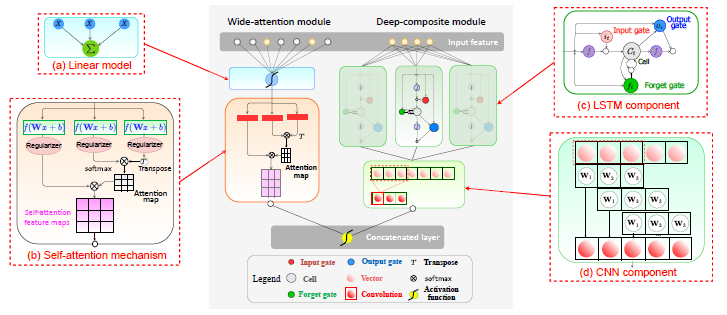Wide-Attention and Deep-Composite Model for Traffic Flow Prediction in Transportation Cyber-Physical Systems
Abstract
Recently, traffic flow prediction has drawn significant attention because it is a prerequisite in intelligent transportation management in urban informatics. The massively-available traffic data collected from various sensors in Transportation Cyber-Physical Systems brings the opportunities in accurately forecasting traffic trend. Recent advances in deep learning shows the effectiveness on traffic flow prediction though most of them only demonstrate the superior performance on traffic data from a single type of vehicular carriers (e.g., cars) and does not perform well in other types of vehicles. To fill this gap, we propose a wide-attention and deep-composite (WADC) model consisting of a wide-attention module and a deep-composite module in this paper. In particular, the wide-attention module can extract global key features from traffic flows via a linear model with self-attention mechanism. The deep-composite module can generalize local key features via Convolutional Neural Network component and Long Short-Term Memory Network component. We also perform extensive experiments on different types of traffic flow datasets to investigate the performance of WADC model. Our experimental results exhibit that WADC model outperforms other existing approaches.
Keywords
- Transportation
- Cyber-physical systems
- Intelligent systems
- Vehicles
Bibtex
@ARTICLE{JZhou:TII20,
author={J. {Zhou} and H. {Dai} and H. {Wang} and T. {Wang}},
journal={IEEE Transactions on Industrial Informatics},
title={Wide-Attention and Deep-Composite Model for Traffic Flow Prediction in Transportation Cyber-Physical Systems},
year={2020},
volume={},
number={},
pages={1-1},
}


Leave a Reply